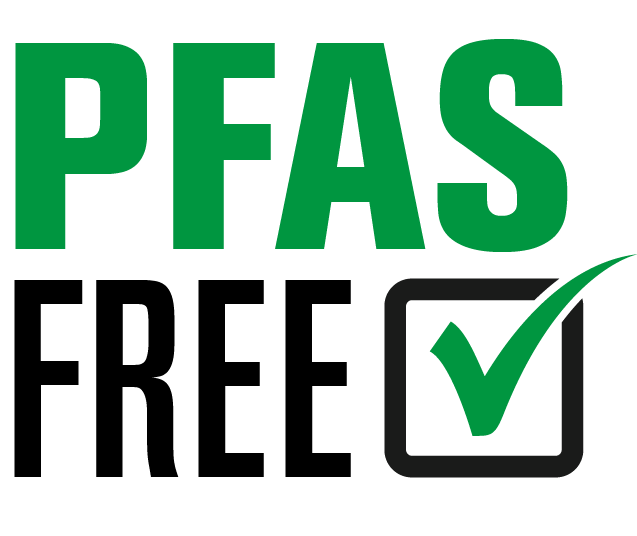PFAS regulation in Europe:
Why fluoropolymers need to be considered in a differentiated way
The discussion about PFAS - polyfluorinated alkyl substances - has become increasingly important in Europe since 2020. Since then, the European Union has been examining the possibility of regulating this group of substances, which comprises over 10,000 different substances. The focus is particularly on short-chain PFAS such as PFOA, PFOS or PFHxS. These are considered persistent organic pollutants (POPs), which means they are extremely persistent in the environment. Sources of these short-chain PFAS include fire extinguishing foams, pesticides, fluorinated gases, paper production and the textile industry.
The definition problem: fluoropolymers under general suspicion
A fundamental problem arises from the current definition of PFAS: It includes almost all fluoropolymers - even though these are structurally and functionally hardly comparable with the critical short-chain PFAS. PTFE, PFA, FEP and related fluoropolymers are extremely long-chain molecules - they can reach a length of around one million carbon atoms.
Fluoropolymers: Indispensable and harmless to health
Numerous scientific studies have shown that fluoropolymers such as PTFE, PFA and FEP are harmless to health. They fulfil the OECD criteria for so-called „lowrisk polymers“. At the same time, they are indispensable in many areas: they are in safety- relevant components in the aerospace and automotive industries, play an essential role in medical technology, are required in the production of semi-conductors and are key pillars of future technologies such as solar energy, wind power, hydrogen and fuel cell technology and lithium batteries.
ECHA‘s public consultation: a differentiated view is needed
In 2023, the European Chemicals Agency (ECHA) a public consultation to better understand the impact of a potential PFAS ban. Companies that use PFAS in any form were asked to explain their markets, possible alternatives and the likely consequences of a ban. The manufacturers of particularly long-chain fluoropolymers - i.e. PTFE, PFA and FEP - also took part with a clear position: fluoropolymers are not harmful to health and should be exempt from the general PFAS regulation.
First evaluation round: focus on consumer goods
Initially, the authorities are focussing on three areas of application: Food packaging and consumer goods, cosmetic products and ski waxes. These sectors are currently being scrutinised by the Risk Assessment Committee (RAC), which assesses the risk-benefit ratio. There should be no such debate for fluoropolymers: they are considered lowrisk and enable numerous technologies that are indispensable both in the medical sector and for ecological transformation. In fact, it has already taken six months to produce an initial draft for these three - comparatively simple - areas of application. It is therefore foreseeable that decisions on a possible ban be delayed by several years.
SEAC assessment:
A look at socioeconomic consequences
The Socio-Economic Analysis Committee (SEAC) will then assess the economic and social impact of a PFAS ban - particularly in terms of jobs, competitiveness and technological dependencies. In view of the their widespread use and unique properties, it is already plausible that fluoropolymers could be exempted from a general ban.
The procedure is also not standardised internationally:
- USA: PFAS are divided into ninety categories, which are assessed separately – fluoropolymers form a separate group there.
- Great Britain is pursuing a similar Approach.
- China, which produces around 50 % of the world‘s PFAS, has so far only banned POPs.
- Japan is committed to strict monitoring of all chemical substances and has upan expert group to assess further PFAS in 2023.
Conclusion: exemption for fluoropolymers is likely
In conclusion, it can be said that The products of fluoropolymer manufacturers (PTFE, PFA, FEP) do not contain any harmful substances such as short-chain PFAS, phthalates or BPA. Due to their unique properties and essential role, an exception to a general ban is highly probable - , from today‘s perspective, objectively justified. In very specific cases, alternatives such as silicones or polyurethanes could be considered but their environmental and health effects are also not entirely harmless. In addition, a replacement usually requires fundamental design adjustments, leads to a loss of performance and shortens the service life of the products. Even in the event of a ban - which is currently not expected - it unlikely that it will come into force before 2040.
PFAS-free cables and wires from SAB Bröckskes
SAB Bröckskes has been developing high-quality special cables for decades – with responsible use of fluoropolymers where their special properties are indispensable. At the same time, we already have PFAS-free cables in our range: silicone-based cables for temperatures up to 200 °C and cross-linked materials up to 150 °C. These enable many industrial applications to be operated safely and reliably.
We offer individual advice and application-specific solutions to customers who want to switch to PFAS-free cables at an early stage. Our products already meet many of the upcoming international requirements. Whether it is possible to dispense with PFAS depends on the technical conditions – our team will be happy to help you find the right cable for your application. You can find out more about our PFAS-free alternatives and industry-specific solutions directly from our team.



